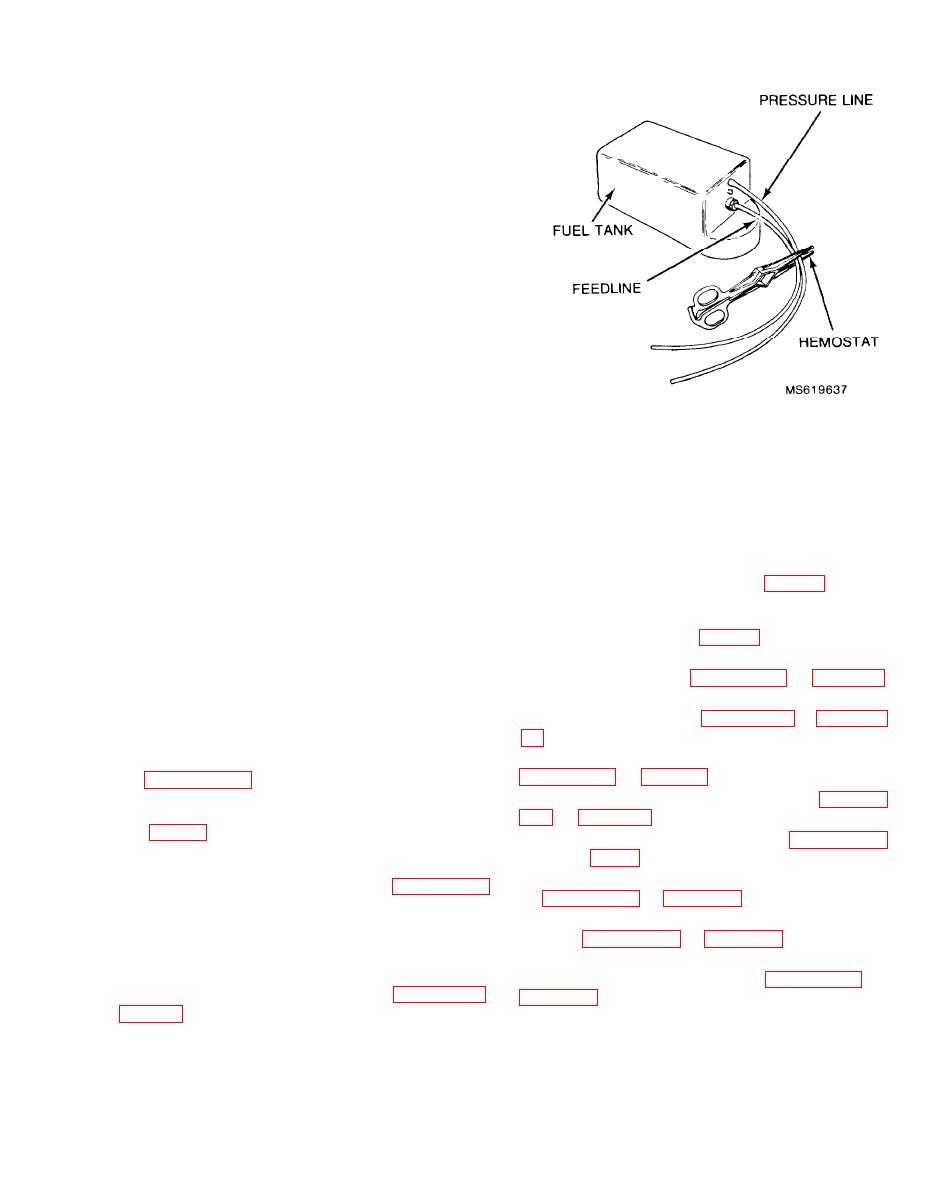
TM 9-1550-416-14&P
2-19.
LANDING THE FQM-117 B-1 & FQM-117 C-1.
CAUTION
The landing procedure requires practice. Landing
should be performed with minimum damage to the
aircraft. If possible, never land the aerial target
while the engine is running as the propeller will be
broken.
a. Note current wind direction. Fly the aircraft into the
wind toward the landing zone. Gradually reduce flying speed
to reduce altitude.
b. As the aircraft settles toward the landing zone, set
throttle control to minimum to stop the engine. If this fails to
stop the engine, continue to fly until the fuel is exhausted. To
avoid a stall and crash, keep the target slightly nose-down in
a glide. Do not pull the nose up with the power off, unless
Figure 2-28. Fuel tank closure procedure.
speed is too great for landing.
c. At approximately 2 to 3 feet above the ground, gradually
lift the nose (flare out) bypulling back on the pitch-roll control
2-21.
OPERATION OF GROUND SUPPORT
stick. Now in a controlled stall, the aircraft will settle.
EQUIPMENT (GSE).
d. Keep the aircraft slightly nose-up until it settles to the
a. The GSE is divided into two major components: the
ground.
field box and the charger. The GSE field box provides the
equipment and the tools for supporting the operation of the
2-20.
STANDBY PROCEDURES.
FQM-117 B-1 and FQM-117 C-1 (See fig 2-29.) The GSE
charger performs both the fast and slow charging of the
NOTE
receiver and servo/battery group batteries, transmitters and
GSE field box batteries. (See fig. 2-30.)
The standby procedure lists the actions necessary to put the
aircraft into a standby condition so that it may be launched
b. For procedures utilizing the GSE emergency power
again with minimum preparation.
cable for the transmitter are paragraph 2-24 and figure 2-37.
c. For procedures utilizing the GSE emergency power
a.
Perform the following standby procedures:
cable for the GSE field box, see paragraph 2-24 and figure 2-
Set receiver power switch to OFF.
(1)
Set transmitter power switch to OFF.
(2)
d. For procedures utilizing transmitter trainer cord, see
Replenish the fuel. (For fueling procedures,
(3)
see paragraph 2-13.)
Pinch off both fuel lines using the hemostat
(4)
e. For procedures utilizing the fuel pump, see paragraph
supplied in the GSE field box to prevent leakage for the tank.
(See fig.2-28).
f. For procedures utilizing the starter, see paragraph 2-
Fast charge the transmitter and receiver and
(5)
14 and figure 2-15.
servo/battery group batteries, if absolutely necessary. (For
g. For transmitter and GSE battery charging procedures,
battery checking and charging procedures, see paragraph 2-22
see paragraph 2-22 and figures 2-31 through 2-33.
and 2-23.
h. For receiver and servo/battery group charging proce-
Check propeller for damage.
(6)
dures, see paragraph 2-23 and figures 2-34 and 2-35.
Inspect airframe and engine for loose hard-
(7)
ware and damage.
i. For external 12Vdc emergency power cable operation
of the GSE field box and transmitter, see paragraph 2-24 and
b. For restarting and flying the aircraft, see paragraphs
2-31

